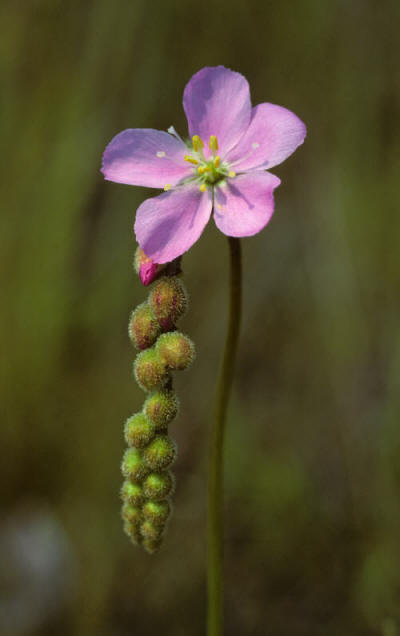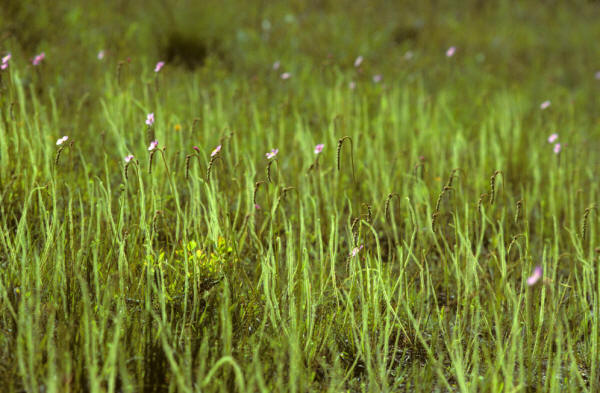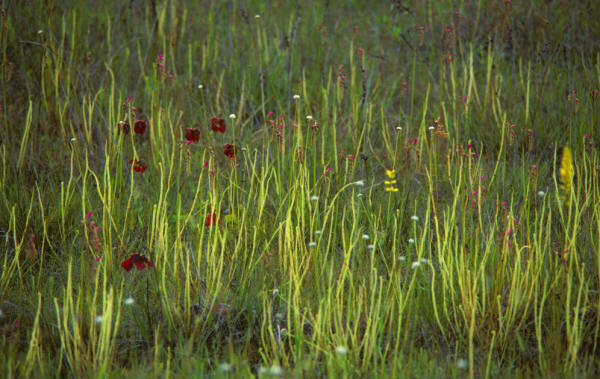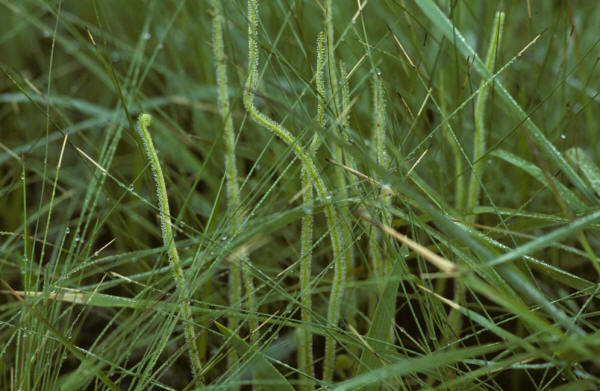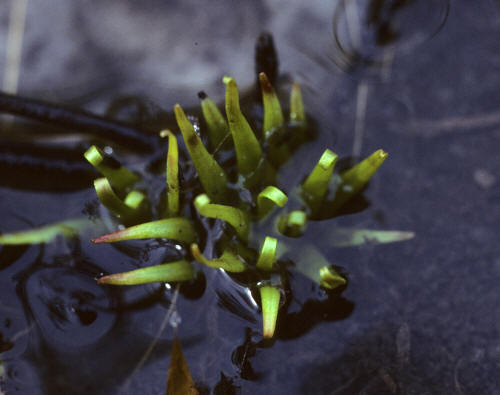|
Carnivorous Plants Story
|
||
|
|
Drosera filiformis var. tracyi Found in wet savannas along Golf Coast and Northeast along the Atlantic coast, this is an endemic North American species. The plants have two recognized varieties: The northern variety of the plants, D. filiformis var filiformis, with a clear red coloration on the glands, and the southern population, D. filiformis var tracyi, a green form, totally lacking in red pigments in their glands. As the botanocal name suggests, the thread-leaf sundew has slender, long, glandular leaves reaching 50 cm in height. (Variety filiformis is small er.) The plants produce a tight winter hibernaculum. This happens even in var. tracyi growing in the south along the Gulf Coast habitats. Large pink flowers bloom in May in the southern habitats. Typically, a flower opens for only one day, and oonly for a few hours in the morning. Flowers bloom at the height slightly above the forest of gladular leaves.
cvmcmhgcmhgcfmhgcmcmcmcvmjvjhvjhv,vvvvvvvvvvvvvvvvvjjjjjjjj,,,,,,,,,,,,,,,,,,, jbkkjhkjh .h.khkjh .h.l.lk .n.ln.ln ,
The nectar seeker is forced to position itself between the trap lobes. Three pairs of innocuous-looking bristles grow on the inner surface of the lobes. The visitor to the Venus' diner has no way of knowing what will precipitate if these sensitive hairs are disturbed.
apid closure, the insect's stru
Introduction Venus Flytrap Sundews Pitcher Plants Cobra Plant Butterworts Bladderworts
|
|
